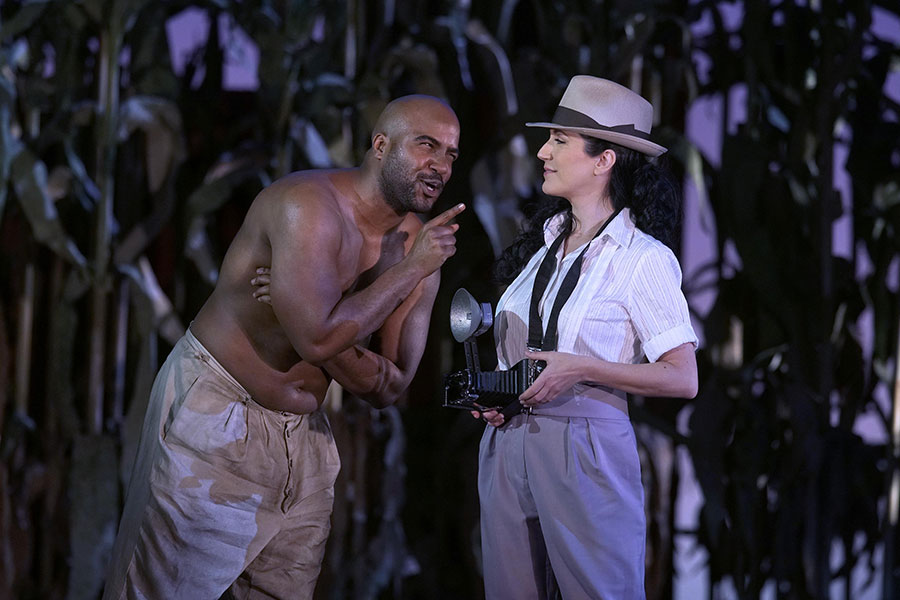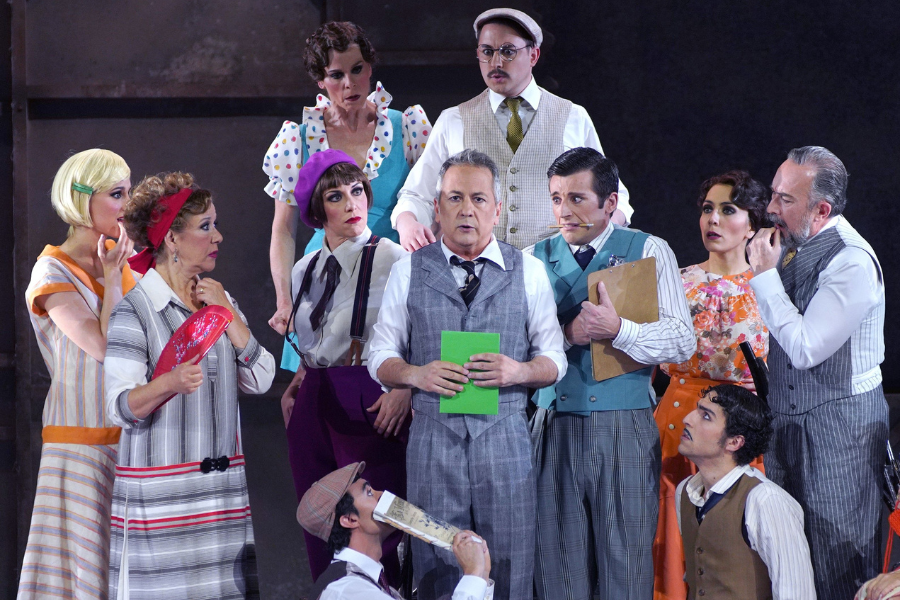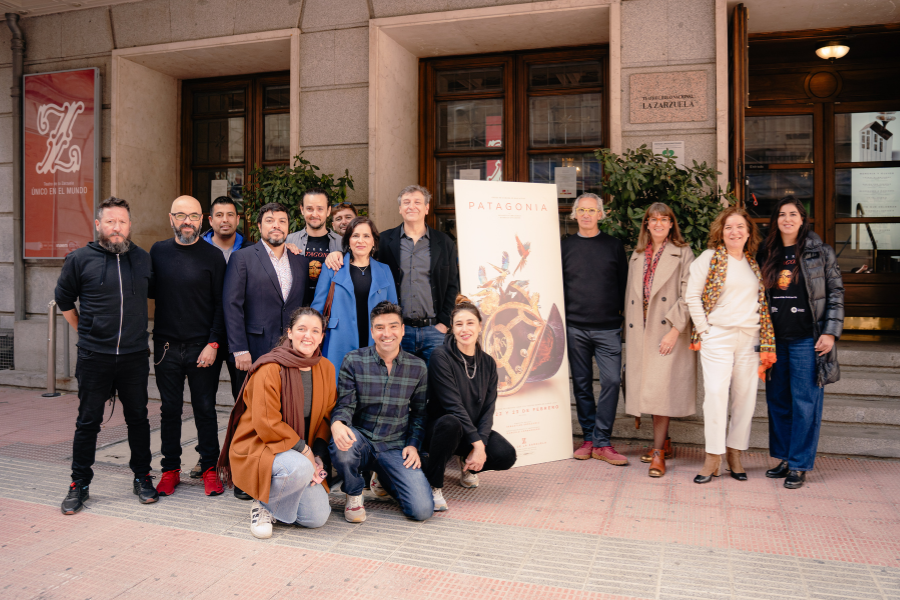Cecilia Valdés, symbol of Cuban popular culture debuts at Teatro de la Zarzuela

Teatro de la Zarzuela in Madrid presents for first time a Cuban zarzuela, con the musical direction of Oliver Diaz and the scene of Carlos Wagner together to an outstanding double cast, in 13 functions plus streaming and television transmissions.
Teatro de la Zarzuela turned 163 last October, and although it is surprising, in that journey of more than a century and a half a zarzuela that was not Spanish was never programmed. Now, with the presentation of Cecilia Valdés in a new theater production, it’s time to make history. The work of Gonzalo Roig, the same as the novel by Cirilo Villaverde ‘Cecilia Valdes or the Hill of the Angel’ in which the libretto by Agustín Rodríguez and José Sánchez-Arcilla, is inspired is held in Cuba as undisputed symbol of its popular culture , of the peculiar identity of this Caribbean island. The zarzuela arrived in America for the mass exodus of Spaniards. There, on the opposite shore of the Atlantic, they made it their own; it took root in such a way that in each country a multitude of its own works emerged – only in Cuba there are more than 3,000 lyric theater scores recorded – compositions that transformed the genre with distinctive stories and music of each place. With the thirteen functions of Cecilia Valdés scheduled on the stage of Jovellanos Street between the January 24 and February 9, the time for the long-awaited return trip finally comes. The time of the necessary return.
On the pit podium will be the maestro Óliver Díaz – well known in this coliseum where he was musical director from November 2015 to June 2019 – who will be in charge of the Orquesta Titular de la Teatro de la Zarzuela, Orchestra of the Community of Madrid, of the Main Choir of the Theater of La Zarzuela and of an extraordinary double cast. For Díaz, Cecilia Valdés is “a perfect amalgam between the great Central European operatic tradition, zarzuela and Afro-Cuban music. Gonzalo Roig – underlines the conductor – is able to color and illuminate each of the actions in the most subtle way showing the psychological aspects of each character with absolute mastery. ”

The new production of Teatro de la Zarzuela has a setting in an elegant, inspired, intelligent and colorful scene signed by Carlos Wagner, who considers that Cecilia Valdés “is a zarzuela with a seductive rhythm, a melancholic poetry, passionate and full of drama, and a touching story of very real and endearing characters . “final in, concludes Wagner, is” a drama that although acclimated origin in the years around 1830, is equally valid in 1950 or 2020, because talks about all the big issues that govern our lives.
This, to reach the intended and desired port, has a team of famous and renowned collaborators: Rifail Ajdarpasic is responsible for the amazing scenery that ev it solves stealthily, like a wild animal that wakes up, in the nucleus of a great reedbed; The suggestive costumes are headed by Christophe Ouvrard, the beautiful lighting is by Fabrice Kebour, and Nuria Castejón is the one who created the fascinating, tribal and heterogeneous choreography.
The work of this stage director born in Venezuela of German parents and based in Barcelona, makes us reflect. Not surprisingly, the psychological work of the characters has a specific weight in its creation: “Create scenes that show real people, full of contradictions: endearing, selfish, touching and terrifying at the same time.”
And these characters have names and surnames. Cuban sopranos Elizabeth Caballero and Elaine Álvarez will play the dramatic role of the young Cecilia Valdés, a light-skinned mulatto marked by fire for a destiny tied to her social and gender status. Cecilia is madly in love with Leonardo, who will be played by Uruguayan and Spanish tenors Martín Nusspaumer and Enrique Ferrer; He is a seemingly romantic boy, but with many serious flaws: macho, classist and arrogant, he uses Cecilia to satisfy his appetites. The Cuban baritones Homero Pérez-Miranda and Eleomar Cuello, will act as José Dolores Pimienta, a mulatto who pretends to Cecilia, with whom he grew up, and who ends up being terribly used by her. The production also has the participation of the legendary Cuban soprano Linda Mirabal, who gives life to the liberated slave Dolores Santa Cruz; with that of the Spanish mezzo-soprano Cristina Faus, who will be Isabel –promised by Leonardo and therefore a rival of Cecilia–, or that of the Cuban tenor Yusniel Estrada who will get into the skin of the black slave Pedro. Together with singers and choir,will take the stage 13 actors, including Alberto Vázquez, Juan Matute, Eduardo Carranza or Isabel Cámara, and 10 dancers.

Between all of them they will weave a story of many edges in which they emerge, like a newly released buoy, the dark poison of slavery, the strange and ambivalent attitude of the Creole to the question of race, the unpunished exercise of power of a few favored by fortune, the lineage and the color of the skin, or the madness of women as a means of escape from an alien and terrible life.
As usual in the productions of Teatro de la Zarzuela, the function on Wednesday, February 5 will be broadcast live from 8pm on ‘streaming’ through the sites Facebook and YouTube Theater’s, and its website. Similarly, the function of Saturday February 1 will be recorded by RTVE Classic Radio to broadcast in the near future.
Around Cecilia Valdés
In addition to the 13 representations, a series of activities have been organized around Gonzalo Roig’s work:
- Friday, January 24 (12h00): Meeting of Carlos Wagner with students at the Ambigú del Teatro presented by Daniel Bianco.
- Thursday, January 30 (12:30 pm): Meeting “Women of ‘Cecilia Valdés’” in the main theater hall. Presented by Daniel Bianco
- Saturday, February 1:Classical Radio RTVE recording function.
- Wednesday, February 5 (8pm): Live streaming of the function through the sites Facebook and YouTube Theater’s, and its website.





